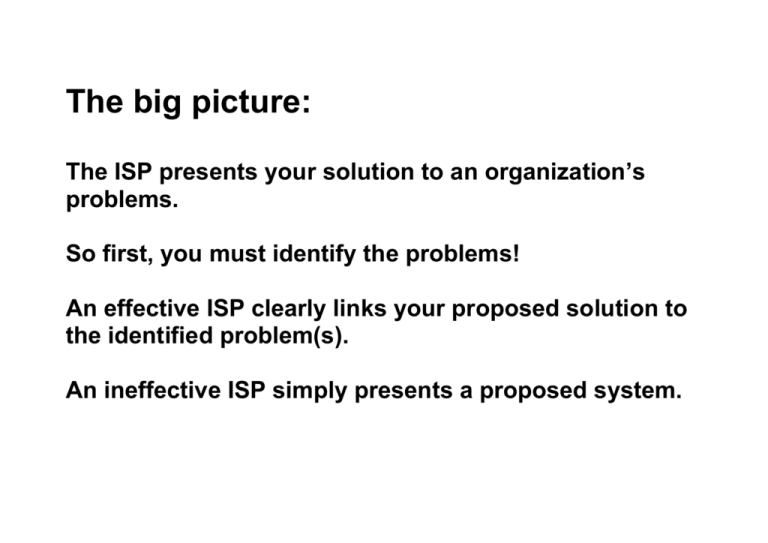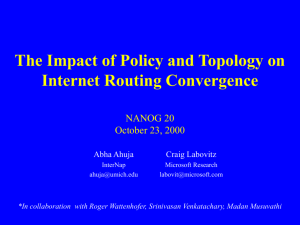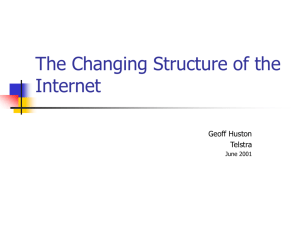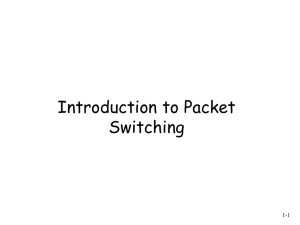TELOS Feasibility
advertisement

The big picture: The ISP presents your solution to an organization’s problems. So first, you must identify the problems! An effective ISP clearly links your proposed solution to the identified problem(s). An ineffective ISP simply presents a proposed system. TELOS Feasibility Technical Feasibility: “Is it likely that our staff can build it?” can the system be developed and implemented using existing technology? new technology? Is the necessary expertise and infrastructure available to develop, install, operate and maintain the proposed system? Is the proposed system able to meet initial performance expectations? accommodate expected new use and functionality over the ‘medium term’? Economic Feasibility: “Is the projected return worth the investment?” Used to select between projects: if there are several alternative opportunities for investing resources, which one gives the best rewards? will the investment of resources in a particular project be worthwhile? how worthwhile will it be? Cost-benefit analysis: calculate the tangible costs and benefits of the system formal Return on Investment (ROI) not covered in this course Costs include: development (including cost of systems analysis, employee time for study), purchase, construction (cost of developers’ time, software, employee time for user centered development), installation, training, maintenance, repair, running costs (salaries, hardware, software, licences, peripherals, …), … of the proposal for its projected lifetime Benefits include: salary savings, hardware saving, maintenance savings, increased revenue, savings from reduced employee pilfering, … of the proposal for its projected lifetime These costs and benefits are made tangible: not: saves the receptionist two hours of time instead: saves the receptionist two hours a week, 26 weeks out of the year = 52 hours/year, @ $15 per hour, = $780/year Note that some of the savings are ‘funny money’: the receptionist will not really have her hours reduced by 26 hours per year! (but she will be able to do other things for the organization). Emphasize that the organization is currently spending that $780 on activity X, and that with your new system they could spend $780 on other activities more directly useful to the organization. Tangible benefits include: o Saving money o Saving time o Reducing errors (which generally saves money and time) You may not be able to find out salary information—don’t press on this! But always make benefits as tangible as possible, and show the significance of a benefit to the organization: Ex: Owner/manager currently spends 5 hours/month producing health & safety reports; proposed system will take 20 minutes. Time savings for owner/manager can be re-directed to strategic initiatives for organization. NOT: Creating reports is slow, proposed system will be faster. Ex: Current billing system averages 7 billing errors per week, out of an average 200 bills/week. Under-billing averages $250 per week ($13K/year). NOT: Current billing system averages 0.1% errors per week. Other intangible benefits to consider: more professional appearance to customers “image” employee satisfaction employer satisfaction … Remember to show that a problem exists in these areas, before you propose your system as a solution! Legal Feasibility: “Will doing this violate laws or contractual agreements?” Are there legal responsibilities? Liabilities? Governing bodies to satisfy? Operational Feasibility: “If built, is it likely that the system will really address or solve the business problem?” Will the system meet the needs and expectations of the organization? If built, is it likely that the system will really address or solve the business problem? Operational factors to consider include: corporate culture staff resistance or receptivity to change management support for the new system the nature and level of user involvement in the development and implementation of the system direct and indirect impacts of the new system on work practices anticipated performance and outcomes of the new system compared to the existing system etc. Schedule: “Is it likely to be built in time to realize benefits and/or meet constraints?” Will the system be constructed in time to realize benefits and meet constraints? Writing a persuasive ISP A persuasive ISP can be the difference between winning a funded project (winning a consultancy) and failing to gain the contract. It should demonstrate: a clear understanding of the client’s business problems and needs a recommendation for a specific solution to those problems evidence that you are competent to deliver on time, on budget good reasons to choose your recommendation over other possibilities Include a cover letter to the ISP o Brief cover letter! o Highlight key points in the proposal Customer’s biggest business problem/need Your proposed solution, at a very high level (2-3 sentences max) A few, most important competitive advantages o Ask for the business Don’t just close with a vague, ‘if you have any questions then please call’ Have a good cover page o The title should not be ‘Proposal’ o Write a title that includes the benefit to the client, preferably with an action verb: ‘Increasing data security with an Oracle-based e-commerce website’ o Include your group’s name, the client’s name, the date o Don’t have your name, logo dominate the title page Next, a good ‘executive summary’. o Focus on benefits of the system o Highlight key points o 2 pages MAX In the first section(s), focus on the benefits to the client, satisfying their business needs, achieving their business objectives. o Write down the business problem to be addressed by the system (shows that you understand their problems) o Recommend a specific solution. Remember that you can’t propose a solution until you have demonstrated a problem exists! o Describe how your proposed system will help solve the business problem o Build belief in your proposed solution by providing substantiating details—not slogans, not vague promises Show that your proposal offers the best ‘value’ o Price is important! Cost/benefit, not just $$$ o The benefit measures must be something that the client cares about (for example, worker satisfaction is usually very low on the employer’s list) o Graphs are good! o Also differentiate your proposal based on your technical ability, your past performance, service, … Quantify benefits and payback Avoid computing jargon where possible. Do, however, use the client’s jargon. Old standard: your organization’s history first in the ISP. New wisdom: put descriptions of your organization as an appendix, or late in the ISP. Eliminate ‘credibility killers’: misspellings, grammar errors, inconsistent document formatting, mis-spelled client name. o Your client cannot read/understand your code: the ISP has to be your selling document, an indication of the quality of your work! Refer to the client by name or as ‘you’, never as ‘it’ or ‘they’








